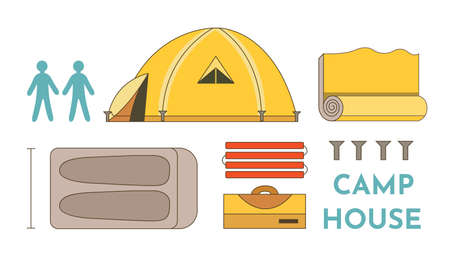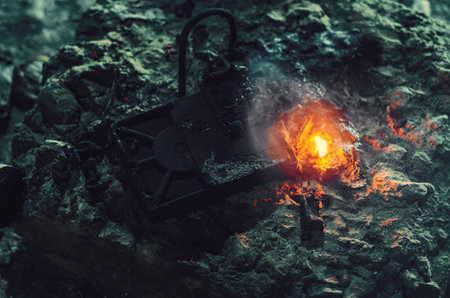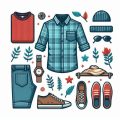1. Insulated Tents and Cold-Weather Sleeping Bags
Fall camping can be magical, with crisp air, colorful leaves, and fewer crowds—but it also means chilly nights. To stay warm and cozy, having the right shelter and sleeping gear is key. That’s where insulated tents and cold-weather sleeping bags come in.
Why Insulated Tents Matter
As temperatures drop at night, a regular tent might not cut it. Insulated tents are designed to retain heat better, block out cold drafts, and reduce condensation inside your shelter. These tents often have thicker fabric walls, added thermal layers, or reflective linings to help trap body heat.
Key Features to Look for in an Insulated Tent:
| Feature | Why It Matters |
|---|---|
| Double-wall construction | Provides better insulation and reduces condensation build-up. |
| Reflective inner lining | Bounces body heat back into the tent for extra warmth. |
| Weatherproof materials | Keeps wind and moisture out during unpredictable fall weather. |
The Importance of a Cold-Weather Sleeping Bag
No matter how good your tent is, your sleeping bag does most of the work when it comes to keeping you warm through the night. Cold-weather sleeping bags are rated for lower temperatures—some even down to 20°F or below—and come with features like draft collars and insulated hoods.
Choosing the Right Sleeping Bag:
| Temperature Rating | Best For |
|---|---|
| 20°F to 32°F (-6°C to 0°C) | Mild fall nights in most U.S. regions |
| 0°F to 20°F (-18°C to -6°C) | Chillier areas like the Rockies or Northeast states |
Look for sleeping bags with a mummy shape for better heat retention, and don’t forget a quality sleeping pad underneath—it helps insulate you from the cold ground. With the right tent and sleeping bag setup, you’ll stay warm, dry, and comfortable no matter how cool those autumn nights get.
2. Layered Clothing and Thermal Wear
When youre camping in the fall, temperatures can shift quickly—from crisp mornings to chilly nights—so dressing in layers is key to staying warm and comfortable. The right clothing system helps you regulate your body temperature and stay dry, even if the weather changes suddenly.
Understand the Three-Layer System
The best way to dress for fall camping is by using a three-layer approach: base layer, mid-layer, and outer layer. Each one has a specific job to keep you warm and dry.
Layer Breakdown
| Layer | Purpose | Recommended Materials |
|---|---|---|
| Base Layer | Wicks moisture away from your skin to keep you dry | Merino wool, synthetic fabrics (like polyester) |
| Mid Layer | Traps body heat to keep you warm | Fleece, down, or synthetic insulated jackets |
| Outer Layer | Protects against wind, rain, and snow | Waterproof/breathable shells like Gore-Tex or coated nylon |
Why Moisture-Wicking Matters
Sweating while hiking or setting up camp is common—even in cold weather. A moisture-wicking base layer pulls sweat away from your skin, helping prevent chills when you stop moving. Cotton should be avoided because it holds moisture and dries slowly.
Insulate with Mid-Layers
Your mid-layer acts like a heat trap. Fleece is a popular choice because its lightweight and breathable. For colder conditions, consider a puffy jacket with down or synthetic fill for extra warmth without adding bulk.
Shield Yourself with an Outer Layer
The outer shell keeps the elements out. Look for jackets that are both waterproof and breathable so you stay dry without overheating. Features like adjustable hoods, sealed seams, and ventilation zippers can make a big difference in comfort during unpredictable fall weather.
Pro Tip:
Dressing in layers gives you flexibility. As the day warms up or cools down, you can add or remove layers to stay just right—no sweating or shivering required!
By mastering layering with the right materials, youll stay cozy around the campfire and comfy inside your tent all season long.

3. Portable Heaters and Safe Heating Options
As the temperatures drop during fall camping trips, staying warm is key to enjoying your outdoor adventure. While layering up with clothing and using insulated sleeping bags helps, adding a reliable heat source can make a big difference in comfort. There are several safe and effective heating options designed specifically for camping that can help you stay cozy without compromising safety.
Top Heating Solutions for Fall Camping
When choosing a portable heater or warming device, it’s important to consider both efficiency and safety. Here are some popular options:
| Heating Option | Description | Best For |
|---|---|---|
| Propane Heaters | Compact and powerful, these heaters run on small propane canisters. Many models come with built-in safety features like tip-over protection and oxygen depletion sensors. | Warming up tents or enclosed spaces (with proper ventilation) |
| Heated Blankets (Battery-Operated) | These blankets are powered by rechargeable batteries and provide consistent warmth throughout the night. | Cold sleepers or those who want added comfort in sleeping bags |
| Catalytic Heaters | Fuel-efficient heaters that use a chemical reaction rather than an open flame to produce heat, making them safer for enclosed areas. | Longer trips where fuel efficiency is a priority |
Safety Tips When Using Portable Heaters
- Always ventilate: Even if a heater is labeled as “indoor-safe,” ensure your tent or camper has adequate airflow to prevent carbon monoxide buildup.
- Follow manufacturer guidelines: Each device has specific instructions—stick to them for safe operation.
- Never leave heaters unattended: Turn off all heating devices when leaving your tent or going to sleep unless theyre specifically designed for overnight use.
Pro Tip:
A great combo for fall camping is using a small propane heater to warm up your tent before bed, then switching to a battery-powered heated blanket while you sleep. This way, you conserve fuel and reduce safety risks overnight.
4. Campfire Essentials and Cooking Gear
Nothing says fall camping like gathering around a warm campfire. As the temperatures drop, having the right tools to safely build, maintain, and enjoy your campfire can make all the difference. Plus, cooking over an open flame adds a cozy, rustic charm to your outdoor experience. Heres what you need to stay warm and well-fed around the fire this fall.
Must-Have Campfire Tools
Keeping your campfire safe and efficient requires a few key items. These tools help you manage your fire responsibly while making it easier to cook and stay warm.
| Item | Description |
|---|---|
| Firestarter Kit | Includes waterproof matches, lighters, or magnesium fire starters—essential for damp fall conditions. |
| Campfire Gloves | Heat-resistant gloves protect your hands when handling hot cookware or firewood. |
| Firewood or Compressed Logs | Dry wood burns best in fall’s damp air; consider bringing your own if local supplies are wet. |
| Portable Fire Pit (if required) | Some campsites require raised fire pits; they’re also great for minimizing impact on the ground. |
| Shovel & Water Bucket | Essential for fire safety—use them to control or extinguish the fire completely before bed. |
Campfire Cooking Gear
A hearty meal cooked over the fire is one of the best parts of fall camping. These cooking tools make preparing food easy and enjoyable while keeping you close to the warmth of the flames.
| Gear | Why You Need It |
|---|---|
| Cast Iron Skillet or Dutch Oven | Durable and perfect for stews, chili, or skillet breakfasts that warm you from the inside out. |
| Grill Grate or Tripod Stand | Makes it simple to cook directly over flames or coals with stability. |
| Long-Handled Utensils | Keeps your hands safe from heat while flipping burgers or stirring meals. |
| Roasting Sticks or Skewers | A must for roasting marshmallows, hot dogs, or even veggies right over the fire. |
| Heat-Resistant Table or Camp Kitchen Setup | Makes prepping and serving meals much easier in cold weather conditions. |
Tips for Safe and Cozy Campfire Time
- Layer up: Wear insulated clothing so you can enjoy time by the fire without getting chilled when you step away.
- Sit smart: Use insulated camp chairs with blankets or heated seat pads for added comfort around the fire.
- Watch the wind: Set up your fire in a sheltered area to prevent smoke blowback and conserve warmth.
- Coffee & cocoa ready: Keep a kettle handy for hot drinks to sip by the flames—it’s a fall classic!
A well-prepared campfire not only provides warmth but also creates memorable moments during chilly fall nights. With these essentials in your gear list, you’ll be ready to cook delicious meals and enjoy cozy evenings under the stars.
5. Comfort-Boosting Extras
Fall camping is all about embracing the crisp air and colorful scenery, but that doesnt mean you have to rough it. A few cozy extras can make your trip way more enjoyable. Think of these as comfort upgrades that help you stay warm and relaxed no matter how chilly it gets.
Insulated Seating
Sitting around the campfire is a fall favorite, but those cold camp chairs can zap your body heat fast. Insulated or padded seating options keep you warmer and more comfortable. Look for chairs with built-in insulation or bring a seat pad designed for cold weather use.
Hot Drink Essentials
Nothing says fall like sipping on hot cocoa, coffee, or tea under the stars. Make sure to pack gear that makes hot drinks easy to prepare and enjoy:
| Item | Why Its Great |
|---|---|
| Insulated Travel Mug | Keeps your drink hot longer and prevents spills around the campsite. |
| Portable Stove or Jetboil | Quickly heats water even in colder temps—perfect for morning coffee or evening tea. |
| Coffee Press or Pour-Over Kit | Enjoy fresh-brewed coffee without needing electricity. |
Packable Blankets
A warm blanket can be a game-changer when youre sitting outside after sunset. Packable insulated blankets are lightweight, easy to carry, and provide that extra layer of warmth. Some even come with water-resistant shells or can snap into poncho form for hands-free coziness.
Recommended Features in a Fall Camping Blanket:
- Water-resistant outer layer
- Synthetic insulation (better for damp conditions)
- Packs into its own stuff sack
- Machine washable for easy cleanup after the trip
Pro Tip:
If youre camping with kids, bring along smaller personal-sized blankets so everyone can wrap up by the fire without fighting over one big throw.
These small comforts may seem optional, but they make a big difference on cool fall nights. With just a little planning, your campsite can feel as cozy as your living room—just with better views.


